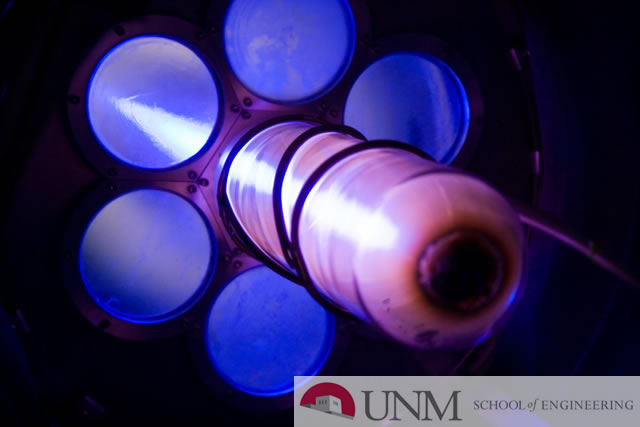
Electrical and Computer Engineering ETDs
Remote Vibration Estimation Using Displaced Phase Center Antenna SAR in a Strong Clutter Environment
Publication Date
8-25-2016
Abstract
Synthetic aperture radar (SAR) is a ubiquitous remote sensing platform that is used for numerous applications. In its most common con\ufb01guration, SAR produces a high resolution, two-dimensional image of a scene of interest. An underlying assumption when creating this high resolution image is that all targets in the ground scene are stationary throughout the duration of the image collection. If a target is not static, but instead vibrating, it introduces a modulation on the returned radar signal termed the micro-Doppler e\ufb00ect. The ability to estimate the targets vibration frequency and vibration amplitude by exploiting the micro-Doppler e\ufb00ect, all while in a high clutter environment can provide strategic information for target identi\ufb01cation and target condition/status. This thesis discusses one method that processes the non-stationary signal of interest generated by the vibrating target in displaced phase center antenna (DPCA)-SAR in high clutter. The method is based on the extended Kalman \ufb01lter (EKF) \ufb01rst proposed by Dr. Wang in his PhD dissertation titled Time-frequency Methods for Vibration Estimation Using Synthetic Aperture Radar [24]. Previously, EKF method could accurately estimate the target's vibration frequency for single component sinusoidal vibrations. In addition, the target's vibration amplitude and position could be tracked throughout the duration of the aperture for single component sinusoidal vibrations. This thesis presents a modi\ufb01cation to the EKF method, which improves the EKF method's overall performance. This modi\ufb01cation improves the tracking capability of single component vibrations and provides reliable position tracking for several other di\ufb00erent types of vibration dynamics. In addition, the EKF method is more reliable at higher noise levels. More speci\ufb01cally, for a single component vibration, the mean square error (MSE) of the original method is .2279, while the MSE of the method presented in this paper is .1503. Therefore, the method presented in this paper improves the position estimate of the vibrating target by 34% when SNR = 15 dB. For the multicomponent vibrations, the mean square error of the estimated target position is reduced b 76% when SNR = 15 dB. The original EKF method and the modi\ufb01ed EKF method as well as simulations for various target vibration dynamics are provided in this thesis.'
Keywords
synthetic aperture radar, fractional Fourier transform, vibrometry, displaced phase center antenna, along-track interferometric SAR, clutter removal
Sponsors
This work was performed at the University of New Mexico and partially supported by the United States Department of Energy (Award No. DE-NA0002494) and Sandia National Laboratories.
Document Type
Thesis
Language
English
Degree Name
Electrical Engineering
Level of Degree
Masters
Department Name
Electrical and Computer Engineering
First Committee Member (Chair)
Doerry, Armin
Second Committee Member
Gerstle, Walter
Recommended Citation
Campbell, Justin. "Remote Vibration Estimation Using Displaced Phase Center Antenna SAR in a Strong Clutter Environment." (2016). https://digitalrepository.unm.edu/ece_etds/43
